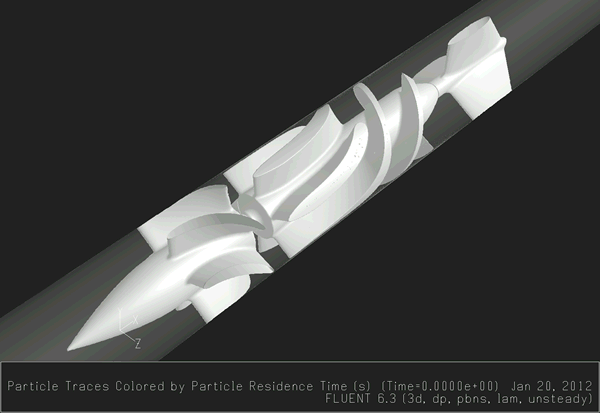30,000 platelets, represented as 3 micron diameter spheres, flow through a virtual ventricular assist device.

The device thrombogenecity emulator allows engineers to virtually test new designs for heart ventricular assist devices (VAD). By running tens of thousands of particles--representing platelets in the blood--through the virtual device, engineers can assess how the design affects the amount of stress each platelet endures. Areas of stress or hot spots in the VAD can cause platelets to become activated and lead to the formation of a clot. Modifications to these hot spots can be made to the design to reduce these stressors. Since the emulator enables design optimization prior to clinical testing in humans, it provides a potentially faster, cheaper, and safer way to design and test new VADs. Below is an original design for a VAD and an optimized design created using feedback from the emulator. In these freeze frames, the optimized design shows fewer hot spots in the VAD.


Animations courtesy of Danny Bluestein, University of Stony Brook.
